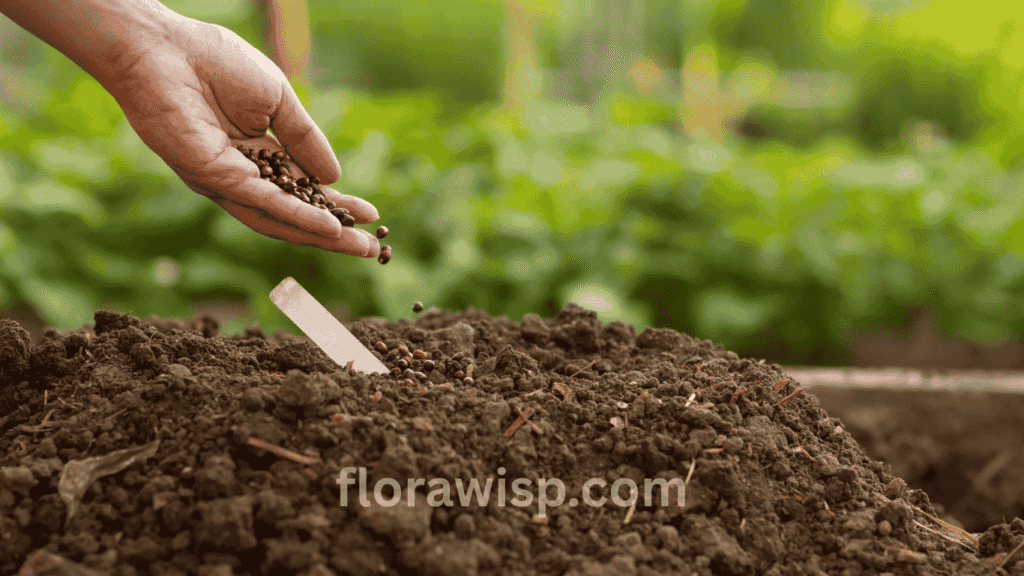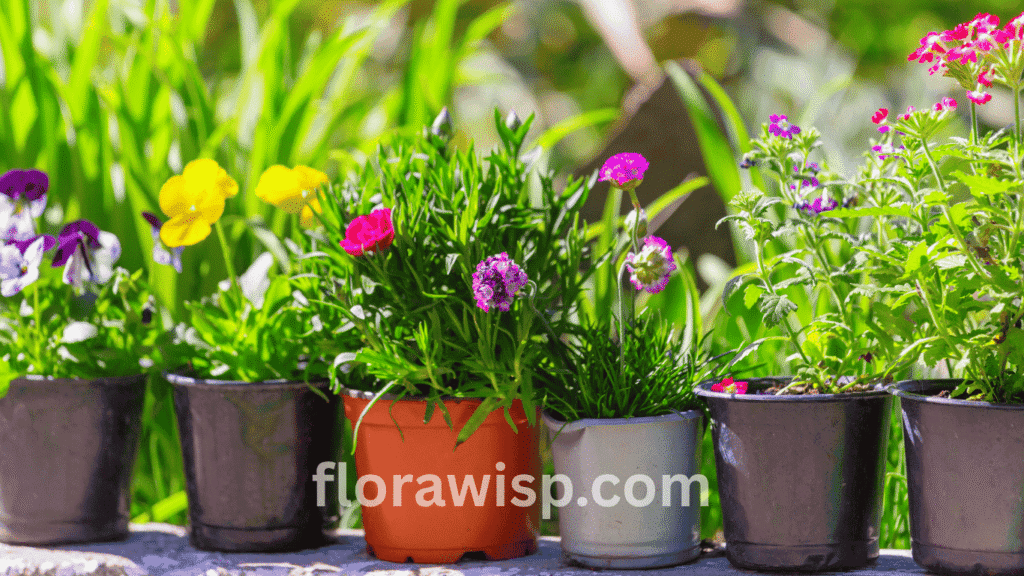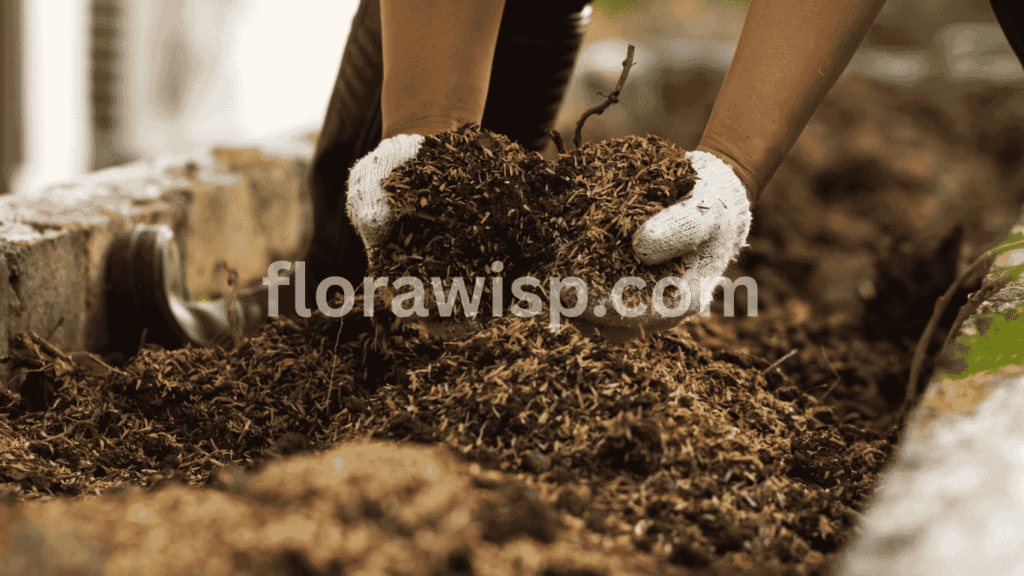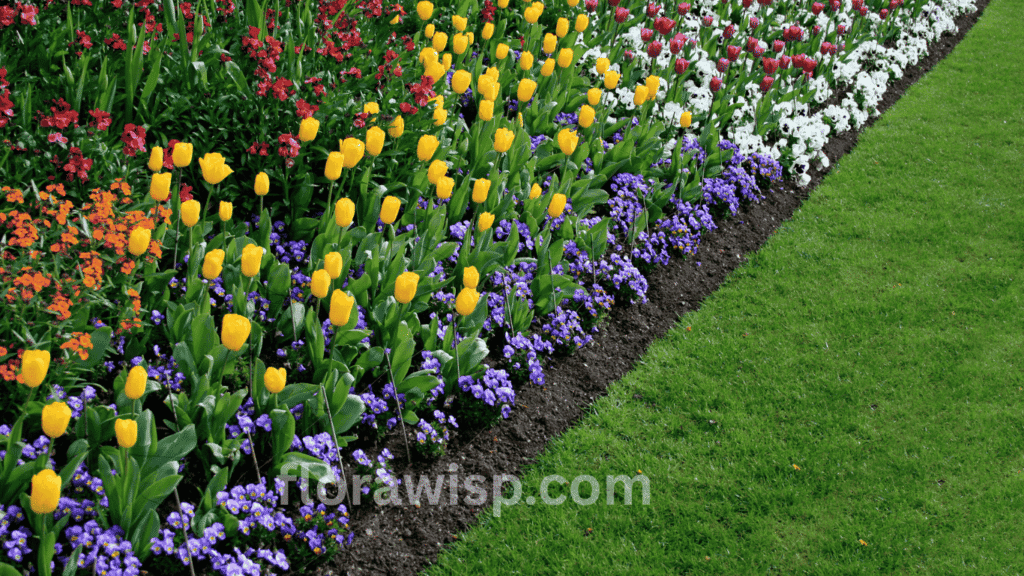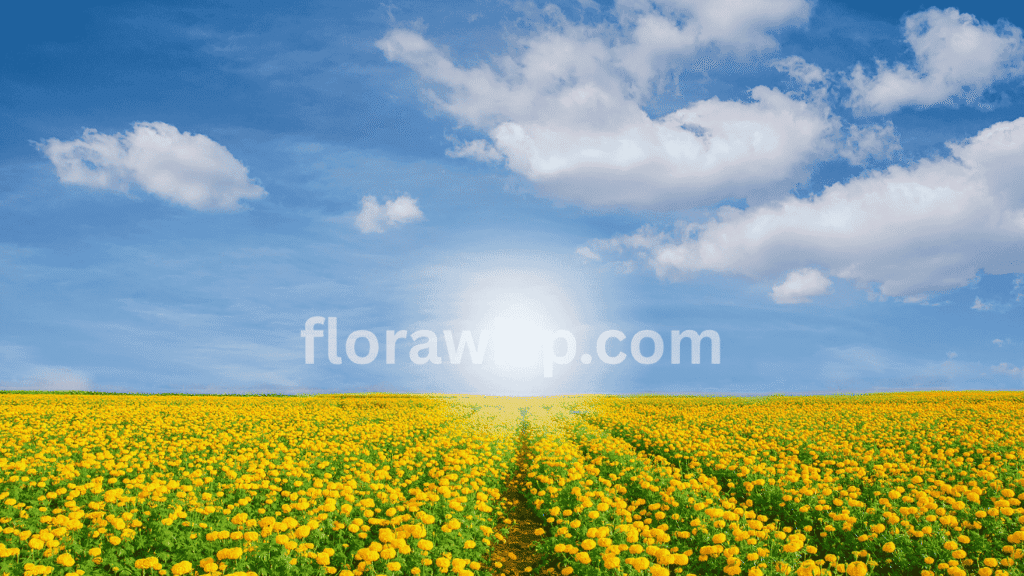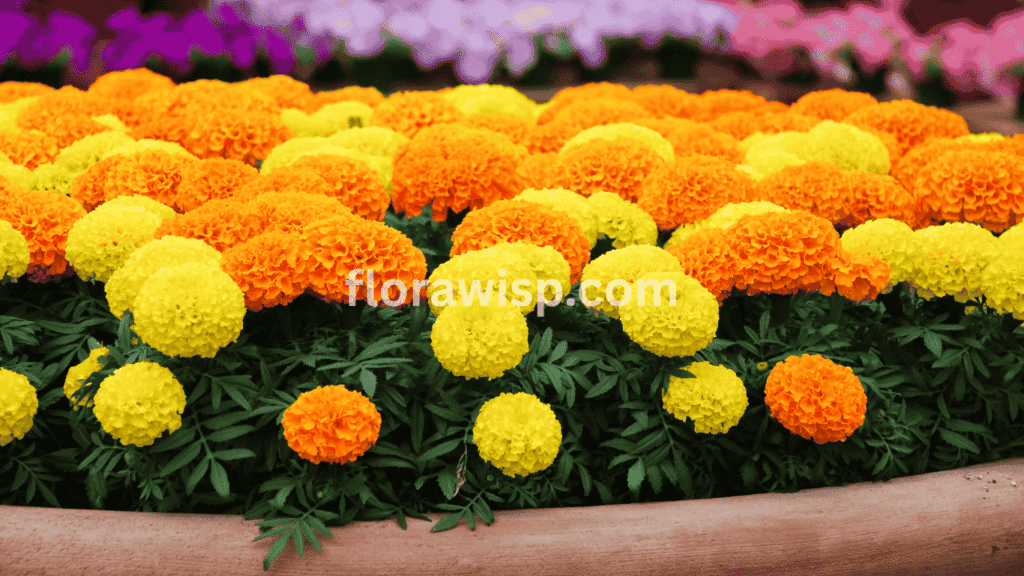Want vibrant blooms from seed without the guesswork? Discover how to plant flowers from seeds with 15 expert-backed tips that reveal what most beginners miss. Start your garden strong indoors or out with fast results and fewer mistakes. Planting flowers from seeds is one of the most rewarding ways to start a garden. Whether you’re aiming for a full-blown flower bed or just a few colorful containers, understanding the basics can save you time, money, and effort.
In This Article
Start by choosing your seed type annuals for fast blooms, or perennials for longevity. Use a quality seed-starting mix, not regular garden soil. It should be light, well-draining, and sterile. I always recommend moistening the soil before sowing. Sow seeds at the depth suggested on the packet too deep, and they might never sprout. If you’re unsure what soil works best for flower seeds, our article on the Best Soil for Flowers breaks down the ideal mixes and textures for strong germination.
If you’re just starting out, you’ll benefit from our step-by-step flower planting guide it highlights beginner pitfalls and gives you a confident head start.
A common mistake I see among beginners is overwatering. Seedlings need moisture but not soggy soil. Use a spray bottle or a bottom-watering method to prevent damping off. And always label your trays! You won’t remember what’s what later. In my early years, I lost an entire tray of cosmos because I ignored the light requirements. Some seeds need light to germinate. Now, I read every packet like a roadmap.
Understanding the Seed of Flowers
Learning how to plant flowers from seeds starts with understanding what a seed truly is. Each flower seed holds a living embryo with stored energy, waiting for the right moment to grow. But that growth depends on three essentials: moisture, warmth, and oxygen. Without all three, even the healthiest seed stays dormant.
Not all seeds behave the same. Tiny seeds like petunias need light to germinate, while others, like lavender or lupine, require cold stratification, a simulated winter to break dormancy. Large or thick-coated seeds like moonflowers often benefit from overnight soaking.
In one season, I sowed two varieties of echinacea side by side. One sprouted in a week, the other after nearly a month despite similar conditions. That taught me: packet timelines are estimates, not guarantees.
Always consider:
- Seed size (affects sowing depth)
- Dormancy needs (stratify or soak?)
- Light sensitivity (surface vs. covered)
- Seed age and source (freshness matters)
According to Cornell University, proper handling and understanding can boost germination by up to 70%. If you’re serious about mastering how to plant flowers from seeds, knowing the nature of your seeds is the foundation of every successful bloom. And once your seedlings thrive, you’ll need to decide where to grow them containers are often a perfect choice. Learn how to display and care for your flowers in pots for beautiful, space-saving blooms that flourish anywhere.
Planting Flowers from Seeds Indoors: Step-by-Step Method

If you’re learning how to plant flowers from seeds, starting indoors is one of the best ways to gain control over timing and success especially in cooler climates. Choose a south-facing window or use grow lights if sunlight is limited. I use LED full-spectrum lights set 2–3 inches above the seedlings.
Start with clean trays and a seed-starting mix. Sow the seeds, cover lightly with soil (unless light is needed), and mist with water. Covering trays with a plastic dome helps retain humidity.
One practical insight: invest in a heat mat. I noticed a 40% faster germination rate with one, especially for snapdragons and petunias.
Once the seedlings sprout, remove the cover and ensure airflow to prevent mold. When they develop their second set of leaves, begin hardening them off and expose them to outdoor conditions gradually over a week.
Mastering how to plant flowers from seeds Indoor growing is all about control. The more consistent you are with light, moisture, and warmth, the healthier your transplants will be. And once they’re ready to bloom, don’t overlook nutrition this is when choosing the Best Fertilizer for Flowers makes all the difference in color, size, and longevity.
Easy Flowers to Grow from Seed 5 Foolproof Varieties

New to seed starting? Begin with flowers that are nearly foolproof. These are resilient, forgiving, and quick to reward you with blooms.
Top picks from my experience:
- Zinnias – Germinate fast and bloom within weeks.
- Cosmos – Thrive in poor soil and cosmos flower seeds self-seed generously.
- Marigolds – Pest resistant and perfect for borders. If you want a pest-free garden, then discover the different Types of Marigold you can grow from seed.
- Sunflowers – Sunflowers grow fast, kids love them, and they’re perfect for beginner gardens. To plant the best sunflowers from seed, explore our complete guide on the best sunflower seeds.
- Nasturtiums – Edible, vibrant, and hardy.
Each of these has been tested in my own garden over multiple seasons. I recommend these to beginners because they tolerate inconsistent watering, don’t require rich soil, and bounce back from transplant stress easily.
if you’re wondering how to plant flowers from seeds successfully without stress, these varieties are the perfect place to begin.
Fast Growing Flowers from Seed: Get Blooms in Weeks

If you’re after speed, go for seeds that germinate and bloom quickly. This list is ideal for impatient gardeners or short growing seasons.
Top fast bloomers:
- Alyssum – Fragrant and blooms in 5–6 weeks.
- Calendula – Edible petals, germinates in under 10 days.
- Bachelor’s Button – Hardy, blue blooms, fast growers.
Case study: One spring, I sowed calendula and zinnias in mid-March under lights. By mid-May, both were blooming in containers. These flowers are perfect for markets, gifting, or visual satisfaction.
Mastering how to plant flowers from seeds that bloom in just a few weeks can turn a slow start into instant garden color.
Best Seed Flowers for Sale: What to Look For in Quality Packs
Not all seed packs are created equal. I’ve learned this the hard way some off-brand seeds never sprout, while others explode with growth.
Here’s what to look for:
- Freshness date: Older seeds lose viability.
- Germination rate: Good brands list this (aim for 85%+).
- Origin: Local or regional seeds often perform better in your climate.
One season, I planted two sets of calendula both in the same raised bed, same week, same watering. One set struggled, with patchy germination and stunted growth. The other bloomed quickly and uniformly. The difference? The first pack lacked any germination info or origin detail, while the second source from Botanical Interests was clearly labeled, fresher, and region-appropriate.
When you’re figuring out how to plant flowers from seeds, choosing the right pack makes all the difference. The more informed your seed selection, the better your chances of success especially for those just learning how to plant flowers from seeds the right way.
Avoid glossy packaging with vague descriptions. Trust brands that tell you variety, year, and ideal growing conditions.
Brands like Johnny’s Selected Seeds or Botanical Interests have been consistent performers in my trials.
Best Flower Seeds Online: Where Experts Shop
When it comes to online seed buying, it’s easy to get overwhelmed. I’ve personally tried a Lot of stores and here’s how they stack up:
| Store | Pros | Cons |
| Burpee | Wide variety, established brand | Sometimes pricey |
| Eden Brothers | Unique varieties, heirlooms | Shipping can be slow |
| True Leaf Market | Great for organics, bulk | Smaller flower selection |
| Seed Savers Exchange | Non-GMO, rare picks | Limited mainstream choices |
For beginners that are just learning how to plant flowers from seed , Burpee is foolproof. But if you’re looking to experiment or support heritage gardening, Seed Savers is a gem.
Best Organic Flower Seeds: Pure, Non-GMO Picks
Organic seeds aren’t just for food crops. Flower gardeners are increasingly choosing non-GMO (Genetically Modified Organism), chemical-free seeds to protect pollinators and soil health.
Why go organic?
- No pesticide residue.
- Supports biodiversity.
- Safer for bees and butterflies.
I compared blooms from regular vs. organic calendula. The organic batch had richer color and attracted more beneficial insects.
Top picks:
- High Mowing Organic Seeds
- Strictly Medicinal Seeds
- Hudson Valley Seed Co.
If you’re learning how to plant flowers from seeds and want to protect your garden’s ecosystem, organic choices are a great place to start. Understanding how to plant flowers from seeds using non-GMO, chemical-free options gives both you and your garden a healthier, more sustainable future.
For eco-conscious growers or those using flowers around veggies, organic is the smart choice.
Best Flowers Seeds for Winter Sowing List

Winter sowing involves planting seeds in outdoor containers during cold months. It mimics natural stratification, and in my experience, it yields stronger, more climate-ready plants.
Top picks for winter sowing:
- Lupines
- Echinacea
- Columbine
- Foxglove
Pros:
- No grow lights needed.
- Cold-hardy seedlings.
- Less transplant shock.
Cons:
- Not suitable for tropical varieties.
- Requires patience.
Learning how to plant flowers from seeds using winter sowing is a game-changer for cold climate gardeners. It’s also a great way to understand how to plant flowers from seeds in a low-maintenance, natural rhythm that works with your environment.
Label containers clearly I use milk jugs and place them outdoors. Come spring, you’ll see tiny sprouts pushing through the soil like magic.
Perennial Flowers from Seeds: Long-Term Garden Planning
Perennials are the gift that keeps on giving. Unlike annuals, they return every year, saving you money and labor.
Top choices I’ve had success with:
- Black-eyed Susan
- Coneflowers
- Shasta Daisy
Pros:
- Lower long-term cost.
- Less maintenance after the first year.
- Naturalizes over time.
Cons:
- Slower to bloom first year.
- Some need stratification.
Understanding how to plant flowers from seeds for long-term blooms helps you build a self-sustaining garden that improves each season.
I started with 12 coneflowers three years ago. Today, they’ve multiplied into dozens and attract pollinators nonstop.
Spring Flowers Seeds: When & What to Plant for Early Blooms
Spring is prime time for sowing. As soon as the last frost passes, seeds can go into the ground.
Best spring starters:
- Sweet Peas
- Snapdragons
- Larkspur
Practical tip: Use a soil thermometer. I don’t plant until my garden beds hit 55°F.
Spring sowing gives flowers a long season to grow, especially in temperate zones. If unsure of your frost date, use online zone calculators.
Fall Flowers Seeds: Extend Your Garden’s Beauty
Fall isn’t just for harvest, it’s a second bloom opportunity.
Recommended seeds:
- Pansies
- Violas
- Calendula
Plant in late summer, and you’ll enjoy color well into early winter. In my zone 7 garden, fall calendula blooms survived until December.
Fall sowing works best with cool-tolerant species and gives a visual lift when everything else fades.
Flowers That Self Seed: Nature’s Gift That Keeps on Giving

Self-seeding flowers save time and effort. After blooming, they drop seeds that germinate next season.
Pros:
- Poppies
- Cosmos
- Calendula
These reseed naturally if you avoid deadheading. Over the years, I’ve turned a bare patch of soil into a self-regenerating wildflower haven with cosmos alone.
Cons:
- Can become invasive.
- Random placement.
Best for informal or cottage-style gardens.
Marigold Seeds from Flowers: How to Save and Replant
Marigolds are beginner-friendly and excellent for saving seeds.
How I do it:
- Let the blooms dry on the plant.
- Remove heads and pull out slender black seeds.
- Store in a dry envelope.
By mastering how to plant flowers from seeds especially easy, self-sustaining varieties like Marigold seeds you build a garden that thrives year after year with less effort and more reward.
Seeds for Perennial Flowers: Best Choices for Lasting Blooms
For low-maintenance gardens, choose perennials that thrive in your region.
Top picks:
- Yarrow
- Coreopsis
- Gaillardia
These flowers offer color, resilience, and return year after year. Use well-draining soil and mulch in winter for better success.
FAQs
Q. What are the easiest flowers to grow from seed for beginners?
Zinnias, marigolds, and cosmos are some of the easiest flowers to grow from seed.
They germinate quickly, don’t fuss over soil quality, and thrive with basic care ideal for gardeners who want reliable results without advanced techniques.
Q. How do you successfully start flower seeds indoors?
Start with clean trays, quality seed-starting mix, and bright light to ensure healthy growth.
Keep the soil evenly moist (not soaked), maintain warmth with a heat mat if needed, and use good airflow to prevent mold or disease. This indoor method gives your seeds a strong, stress-free start.
Q. Can I collect and reuse seeds from flowers I grow?
Yes, many flowers produce seeds you can save, dry, and replant the next season.
Let the flower heads dry fully on the plant, collect the seeds carefully, and store them in a labeled paper envelope in a cool, dry place for best results. I’ve regrown entire marigold beds this way at no extra cost.
Q. Which flower seeds grow and bloom the fastest?
Alyssum, calendula, and bachelor’s button are fast bloomers, ideal for quick color.
These flowers germinate within 7–10 days and often bloom in just 6–8 weeks. They’re perfect for filling gaps in garden beds or for impatient gardeners eager to see early results.
Conclusion
Learning how to plant flowers from seeds is not just a skill, it’s a connection to nature. From fast bloomers to perennial beauties, growing from seed gives you control, affordability, and satisfaction. Whether you’re planting marigolds to save seeds or testing organic varieties, each flower you grow adds color to your world and confidence to your gardening journey.
If you’re curious about standout blooms to grow, explore these stunning Types of Sunflowers and discover the joy of seed-to-bloom magic.
Sources
Cornell University Cooperative Extension
University of Illinois Extension
Gardener, M.Sc. Horticulture
Elara Bennet is a gardening writer from Austin, TX, passionate about sustainable lawns and blooms. Read full bio →

